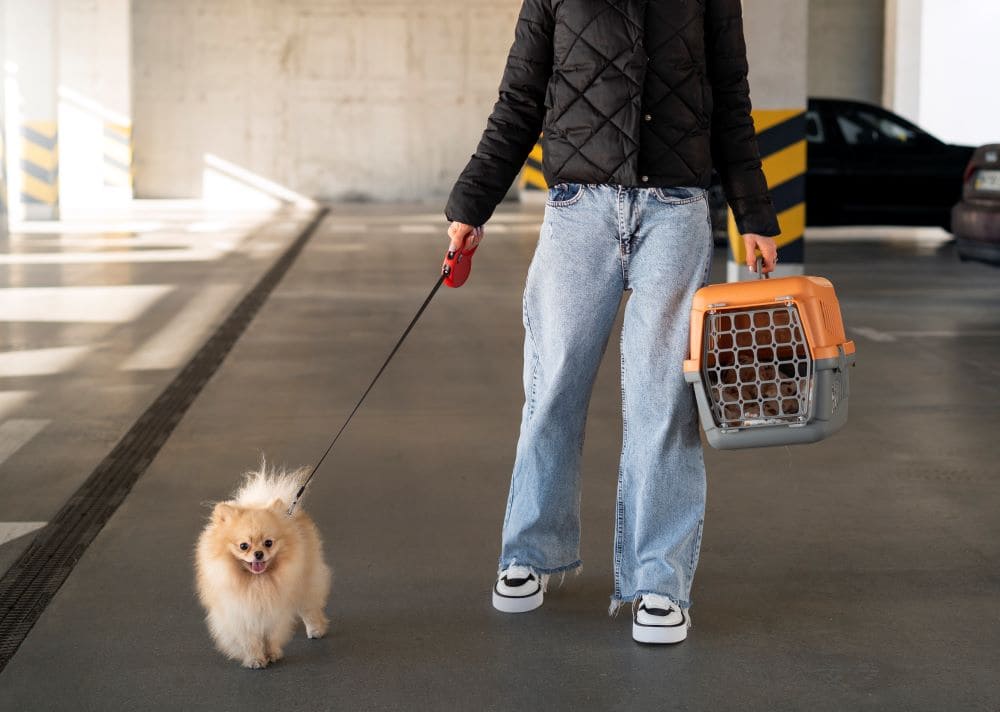
Pet boarding is a service where pets are cared for outside the home, typically at a dedicated facility, while their owners are away. Whether it’s a vacation, a business trip, or an emergency, pet boarding can provide a safe environment with plenty of attention and care. Here’s a guide to help you understand and choose the best boarding options for your pet:
1. Understand the Types of Pet Boarding Facilities
- Kennels and Catteries: Traditional boarding facilities often have separate areas for dogs and cats. Dogs are usually housed in kennels with access to runs or play areas, while cats have individual cages or cat condos.
- Luxury Pet Hotels: These high-end facilities may offer larger suites, play areas, grooming services, and even pet “spa” treatments. Some also provide live streaming so you can check in on your pet.
- In-Home Boarding: Some pet sitters or small businesses offer in-home boarding, where your pet stays in the caretaker’s home, offering a more personal, home-like experience.
- Veterinary Boarding: Some vet clinics offer boarding services, which is especially helpful if your pet has health conditions that require medical attention.
2. Consider Your Pet’s Needs
- Health and Age: Pets with health issues or senior pets may need special care, which some facilities are better equipped to handle.
- Personality and Comfort Level: Some pets are more social, while others may prefer quiet spaces. Choose a facility that aligns with your pet’s comfort level and energy.
- Routine Needs: If your pet has specific dietary, exercise, or medication needs, ask if the facility can accommodate these requirements.
3. Visit the Boarding Facility
- Cleanliness and Odor: Look for a clean environment, both in the sleeping areas and common play spaces. A strong odor can indicate poor hygiene practices.
- Facility Layout: Ask to see where your pet will sleep, eat, and play. Ensure that the facility has separate spaces for dogs and cats to minimize stress.
- Security: Check for secure fencing, locked gates, and measures to prevent escape, especially for dogs who are escape artists.
- Temperature and Ventilation: Make sure the facility has good ventilation and temperature control to keep your pet comfortable.
4. Assess Staff and Care Practices
- Qualifications and Experience: Staff should be experienced in handling pets and trained in pet first aid. Some facilities have veterinary technicians on staff, which can be a plus.
- Staff-to-Pet Ratio: Facilities with a higher staff-to-pet ratio typically offer more attention and better supervision.
- Supervision and Interaction: Ask about the daily routine, including feeding schedules, exercise, and playtime. Some pets may prefer more social interaction, while others may need private spaces.
5. Ask About Daily Activities and Amenities
- Exercise and Playtime: Look for a facility that offers outdoor time, group play, or solo play, depending on your pet’s needs.
- Sleeping Arrangements: Some facilities provide kennels or crates, while others have suites with beds and blankets. Choose what you think will be most comfortable for your pet.
- Special Services: Some boarding facilities offer grooming, bathing, or even training sessions during your pet’s stay.
6. Check Safety and Health Protocols
- Vaccination Requirements: Most reputable boarding facilities require pets to be vaccinated for common illnesses (like kennel cough for dogs and feline viral infections for cats). Ask about what is required before bringing your pet in.
- Emergency Procedures: Ask if the facility has a veterinarian on call and if they have emergency protocols in place in case your pet becomes ill or injured.
- Health Monitoring: Good facilities will check pets regularly for signs of illness, stress, or injury.
7. Ask About Communication and Updates
- Updates on Your Pet: Some facilities offer daily text or email updates, and some even have video streaming so you can watch your pet while you’re away.
- Contact in Case of Emergency: Ensure the facility has your contact information and knows how to reach you or your vet in case of an emergency.
8. Consider a Trial Run if Possible
- Trial Daycare Visit: If your pet hasn’t been boarded before or seems nervous, consider a trial daycare visit. This helps your pet get familiar with the environment and staff, reducing stress during longer stays.
- Overnight Trial Stay: For longer trips, try an overnight stay as a test run to see how your pet adjusts.
9. Budget and Costs
- Compare Prices: Boarding costs vary based on location, amenities, and type of service (standard vs. luxury). Make sure to ask about all fees, including for special services or extra playtime.
- Consider Value Over Cost Alone: Sometimes paying a bit more for a facility that offers better supervision or amenities can make a significant difference in your pet’s comfort.
10. Alternative Options
- Pet Sitter: If boarding doesn’t seem like the right fit, you might consider hiring a pet sitter who can either stay in your home or visit to care for your pet.
- In-Home Pet Boarding: This allows your pet to stay in the home of a caretaker, which may be less stressful for pets that don’t do well in a traditional boarding setup.
Preparing for Boarding
- Bring Familiar Items: Some facilities allow you to bring your pet’s favorite blanket, toys, or even food to help them feel at home.
- Provide Clear Instructions: Write down any special care instructions, including dietary needs, medication schedules, and behavior quirks.
- Stay Calm During Drop-Off: Pets can pick up on their owner’s anxiety, so try to keep drop-off brief and upbeat to minimize stress.
By visiting the facility, understanding the routines, and checking for safety protocols, you can ensure a positive boarding experience for your pet and peace of mind for yourself while you’re away.



